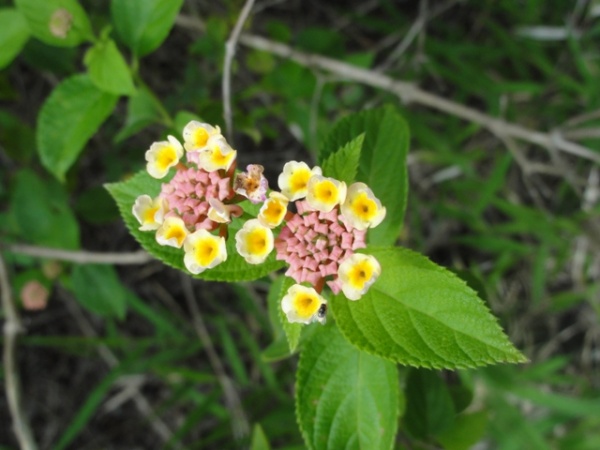Invasive Plants (Weeds)
Declared Plants
Pest plants targeted for control under state legislation are species that have, or could have, serious economic, environmental or social impacts. How weeds are classified can be confusing. At a national level 32 weeds have been listed as Weeds of National Significance (WONS) to prioritise federal funding for weed control. In Queensland, declaration under the Land Protection (Pest and Stock Route Management) Act 2002 imposes a legal responsibility for control by all landholders.
Declared plants are listed under three different categories.
Prohibited invasive plants are not present in Queensland and:
- seriously threaten Queensland’s primary industries, natural environment, livestock, human health and people’s livelihoods
- must be reported to Biosecurity Queensland within 24 hours of the sighting. A person reporting the prohibited invasive plants must take all reasonable and practical steps to minimise the risk of it spreading or escaping until they receive advice from an authorised officer.
Restricted invasive plants are established in Queensland and seriously threaten Queensland’s primary industries, natural environment, livestock, human health and people’s livelihoods.
A pest species that is commonly established in parts of Queensland and a notice may be issued on a landholder to take reasonable action against the weed if it is causing, or has the potential to cause an adverse impact, on a nearby ‘environmentally significant area’ such as a national park.
Species not declared under Queensland legislation may still be declared at a local government level under local laws. Additionally the alert weed species are not currently considered an immediate risk in the Dry Tropics region however they are included because of their highly invasive nature in surrounding areas.
In the grazing lands, the most important issues are invasion by weeds such as Rubber vine (Cryptostegia grandiflora), Chinee apple, Bellyache Bush, Lantana, and Parthenium, the use of fire as a management tool and damage by livestock. In the cropping lands, the most important issues are invasion by exotic grasses such as paragrass, and the replanting of trees lost from riparian systems. Eucalypt savannahs, acacia scrubs and dry rainforests of the region have been seriously invaded by exotic shrubs such as Lantana (Lantana camara) and rubber vine (Cryptostegia grandiflora) and existing grasses and forbs such as grader grass (Themeda quadrivalvis), guinea grass (Panicum maximum) and Parthenium (Parthenium hysterophorus).
Riparian zones are especially susceptible to colonisation by certain weeds. This is presumably because water and nutrients are in greater supply in these areas. Rubber vine (Cryptostegia grandiflora) is an obvious example from the Burdekin rangelands of a weed species that thrives in riparian zones. While occurring in other parts of the landscape, plants of this species are larger, grow more densely and produce more seeds in riparian zones (Roth et al 2002)
Other species that develop particularly serious infestations in riparian zones are:
- Castor Oil Plant (Ricinus communis)
- Guinea Grass (Panicum maximum)
- Parkinsonia (Parkinsonia aculeata)
- Chinee Apple (Ziziphus mauritiana)
- Bellyache Bush (Jatropha gossypiifidia)
- Giant Rat Tails Grass (Sporobolus pyramidalis and Sporobolus natalensis)
- Giant Panamatta Grass (Sporobolus fertilis)
- American Rats Tail Grass (Sporobolus jacuemontii)
- Parkinsonia represents a serious and growing threat to swamps, billabongs, and wetlands in the Desert Uplands bioregion (Morgan 2001).
Invasive aquatic weeds are mainly weeds occurring in waterbodies, but also includes those that may infest adjacent terrestrial systems. The ponded pastures of paragrass (Brachia mutica) and hymenachne (Hymenachne amplexicaule) are also a noted threat (McCullough 2004). Aquatic and semiaquatic weeds are the major water quality and habitat issues in the coastal floodplain wetlands. They have dramatic effects on water quality, aquatic flora and fauna and ecosystem processes. Increased use of paragrass and hymenachne as species for ponded pastures is likely to increase the pressure on coastal and inland wetlands as these species are very aggressive and tend to migrate out of ponded pastures into downstream waterbodies and wetlands.
Aquatic weeds are a significant factor in the degradation of habitat values of waterways and wetlands. The major effects of aquatic weeds include:
- increased biomass through vigorous growth, leading to decline in water quality, especially oxygen;
- accumulation of contaminants (by uptake and incorporation into bottom sediments following decomposition);
- reduced biodiversity through habitat degradation, e.g. loss of fish species;
- alterations to flow regime; can increase the frequency of flooding due to the accumulation of sediments and the flow resistance of the weed body, and
- loss of aesthetic and amenity values (Roth et al 2002).
- African Tulip Tree (restricted)
- Athel Pine (restricted)
- Broad Leaf / Brazilian Pepper Tree (restricted)
- Capitan Cook Tree / Yellow Oleander (restricted)
- Chinee Apple (restricted)
- Mesquite (restricted)
- Miconia (restricted)
- Neem (other)
- Parksonia (restricted)
- Pond Apple (restricted)
- Prickly Acacia (restricted)
- African fountain grass (restricted)
- American rat’s tail grass (restricted)
- Bamboo (other)
- Gamba Grass (restricted)
- Giant Parramatta grass (restricted)
- Giant rat’s tail grass (restricted)
- Itch Grass (other)
- Johnson Grass (other)
- Parramatta Grass (other)
- Elephant grass (other)
- Swamp Foxtail (other)
- Kyasuma Grass (other)
References
- Roth, C.H., Lawson, G. and Cavanagh, D. 2002 Overview of the key Natural Resource Management Issues in the Burdekin Catchment, with particular reference to Water Quality and Salinity. Burdekin Catchment Condition Study Phase 1. Report commissioned by Dept. of Natural Resources and Mines on behalf of the Burdekin Dry Tropics Board. CSIRO Land and Water Townsville.
- Morgan, G. 2001 Landscape Health in Australia. A rapid assessment of the relative condition of Australia’s bioregions and subregions. National Land and Water Resource Audit, Canberra.
- McCullough, M 2004 Healthy Rangelands: Principles for sustainable systems – Focus on Australia’s Burdekin rangelands. Tropical Savannas CRC. Darwin


